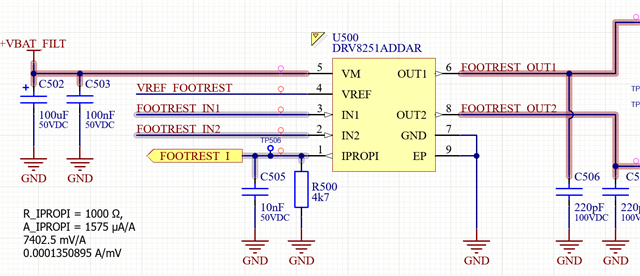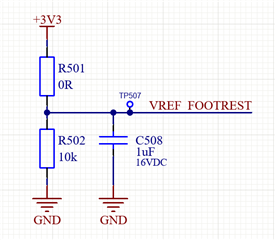Tool/software:
Hello,
I am observing some weird behavior when using the DRV8251ADDAR to control a low power DC brushed motor. First of all please see the schematic below.


I have 2 questions:
1) First of all I am observing weird behavior of the IPROPI output depending on the actuation direction. In the first image below were IN2 is PWM driven (and IN1 is LOW) IPROPI behaves normally (I have set the OCP quite high which is why the IPROPI signal in yellow is quite low). Now when I reverse the direction (so now IN1 is PWM driven & IN2 is LOW) IPROPI goes up to VREF even though I have checked that the motor behaves the same both directions (~30-40mA steady state). There is no abnormality in the actual driving of the motor, both directions work fine...

RED = voltage across OUT1 against OUT2, BLUE = IN2, GREEN = IN1, YELLOW = IPROPI

2) Another abnormality that I observe is that the output of the driver does not respond to my input when I start the PWM command from i.e. 30% duty cycle. When I ramp up from 0% the output works fine and the motor spins as expected both ways (with the IPROPI issue from point 1). When I ramp up from 30%, the output does not respond at all (in neither direction), you can also see this on the scope, RED signal is now absent. The IPROPI signal is the same regardless of which PWM duty cycle is start ramping up from.


I suspect the issues might be related.. I have checked using multiple boards, all respond the same.




